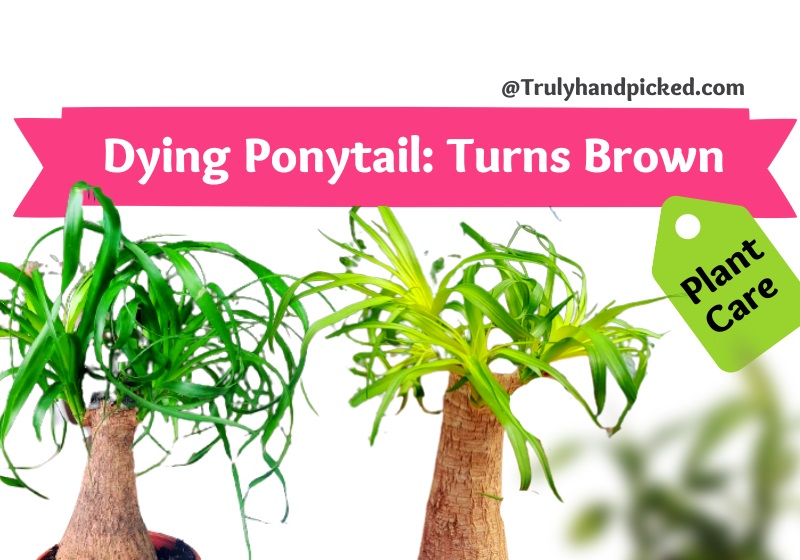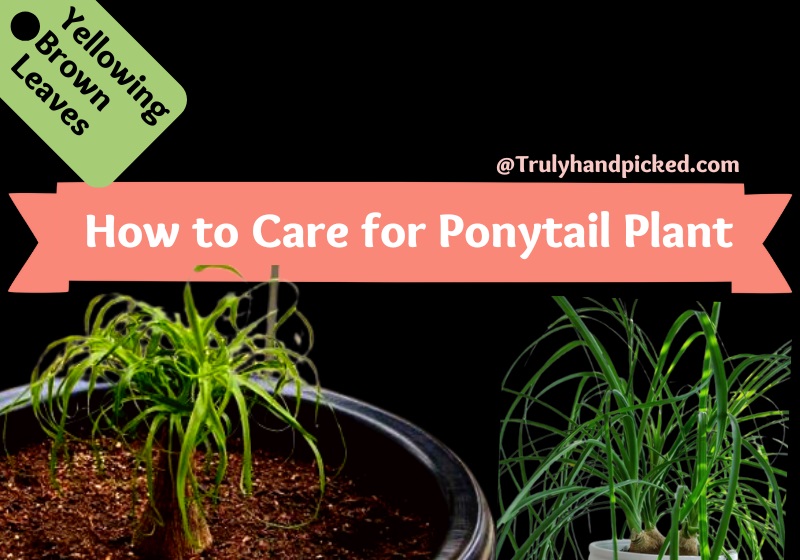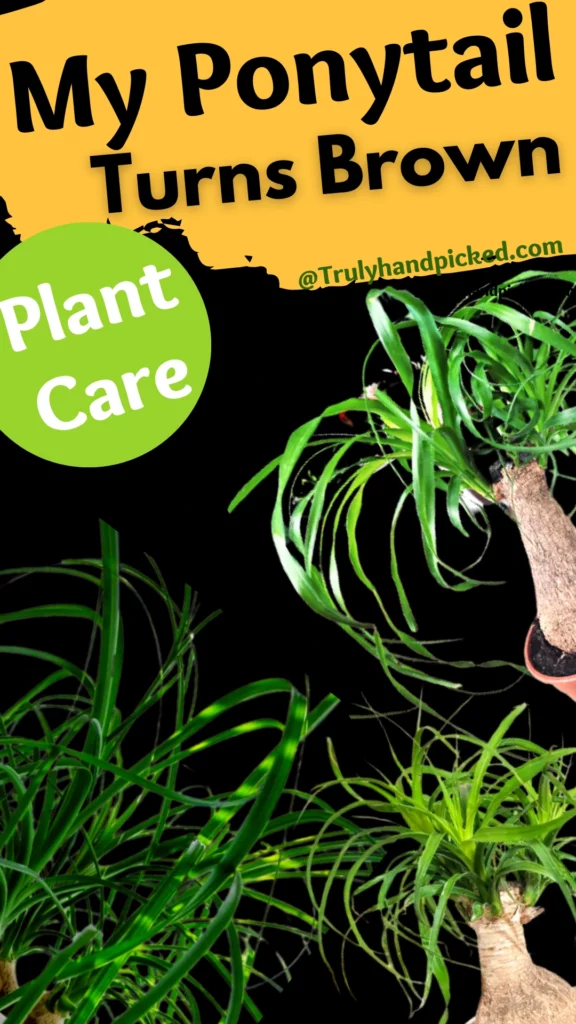Ponytail or ponytail palm is a unique-looking ornamental plant. This species of the Asparagaceae family is native to eastern Mexico and related to the true palm genus.
A ponytail plant can thrive under any preferable gardening climate with the mildest care. This quality makes this palm species a noted place among the other bonsai houseplant options.
Here are some important facts you must know about a growing ponytail palm to give it the best thriving condition-
Ponytail Plant Care:
- Soil: Due to being a palm species, ponytail palm always thrives best in sandy, well-drained soil. Keep the pH balance between 6.5 to 7.5 and use cactus soil mix for the best result.
- Water: A ponytail palm plant needs consistent yet irregular watering. Water your plant every 10-14 days. Let the 2-3 inches of the topsoil dry properly between watering
- Fertilizer: A ponytail plant is a good feeder. You should feed it twice a month in normal seasons and once a month during frost. Any succulent food fertilizer is good for this palm category.
- Sun Exposer: As ponytail palm could be a good outdoor plant, it can tolerate full sun exposure for several hours. If you are growing this species indoors, place it near your windowsill or an east-facing window to provide adequate sunlight.
- Climate: maintain a temperature between 60° to 80° F to give the plant the best growing condition. You can place the planter in USDA hardiness zones 9-12 and medium humidity.
- Pruning: Prune your palm tree by removing dead leaves and infected leaves from your plant. Pruning also helps some sections of a bushy ponytail palm provide enough light and water accordingly, in way of organizing your plant healthily.
- Repotting: In the spring season, once you feel that your ponytail palm plant is overgrowing the current planter. bring a new planter that must be 1 ft longer than the previous one. Fill it with the preferred potting mix and repot the entire plant carefully without hurting any of its roots.
- Pests and Bugs: As ponytail palm is a succulent type of houseplant, it gets incorporated by several pests and bugs. Sooty mold, blight, mealybugs, etc. are some common problems, you may face with a growing ponytail palm plant. Try to apply neem oil or rubbing alcohol to get rid of these issues organically.
How to Save a Dying Ponytail Palm?
Contempt the fact that how hard we try, sometimes, we get the very unfortunate outcome of a ponytail palm plantation, like a dying plant. Always some common and stressful causes work behind a dying ponytail palm.
Fortunately, you can reverse a dying ponytail palm successfully, if you catch and resolve the issues in time. You should find the real source behind this ill-fated incident first and then, must cure it entirely of its root.
Reasons for Dying:
- Root rot
- Stress
- Dehydration
- Overfertilization burn
- Extreme frost exposer
- And untreated bugs as well as pests’ issues
How to Deal with It?
- Keep the watering schedule accurate
- Save the plant from root bounds
- Maintain a good drainage system
- Save your plant from sudden transplant shock or drafts
- Don’t feed your plant more than once a month
- Keep the planter away from extreme frost or snowy weather
- And treat any bug or pest instantly once you detect them on your plant asap
Why Is My Ponytail Turning Brown?
If you have a growing ponytail palm as a houseplant, you may sometimes find some brown tips found on the leaves. This succulent holds a great glance with sleek green foliage over a hardy brownish stem.
However, this exclusive view may get interrupted by some unwanted brown tips on the leaves. Let’s find out the real cause of this problem along with its effective solutions in this discussion below-
Causes:
- Overwatering
- Underwatering
- Low humidity
- Overfertilization
- Bugs attack
- Insufficient sun exposer
- And due to the aging process
Solutions:
- Stop watering your ponytail palm needlessly and water it only when the topsoil turns dry.
- Never skip the watering entirely, and try to do it accurately like the preferred schedule
- Your plat wants medium to high humidity like 40% humidity level or above, try to provide it consistently
- If you feed your plant more often than its actual requirements, it leads to a salt buildup in the stems, which causes brown tips soon.
- Beware of bugs attack, as mealybugs often suck from the sap of the plant and initiate such brown tips shortly on the foliage
- Remember that your ponytail palm needs full sun exposure and bright light for 6-8 hours. If you can’t provide your plant so, it will soon have brown tips on the leaves very soon
- And sometimes, brown tips may appear on old leaves. So, if your plant leaves are old enough, it may get such tips eventually. Trim those leaves in time before they start affecting other new leaves.
How to Propagate Ponytail:
Even though a ponytail palm has a hard and thick stem, you can grow a whole plant from its cutting easily, like any other typical houseplant. Let’s learn how to practice the process like a pro
Supplies You Need:
- A sharp shear or cutter
- Rooting hormone
- A new pot
- Soil prepared with sand, perlite, cactus mix, and compost
- Watering can or sprayer
- And some decorating rocks
Methods:
- Find a pup out of the parent plant that must be 4-5 inches long
- Cut that part out along with the nod carefully
- Dip the end part in a rooting hormone solution after letting the cutting dry for 2 days
- Now, bring a terracotta planter with prepared potting mix and make a hole in the middle
- Remove the leaves from its bottom section first before the planation
- Then, sow the cutting into the soil through that hole about 1/3 deep on its length down
- Apply the decorative rocks around the base of the plant after securing the soil well
- Water the soil with a sprayer carefully to make it evenly moist
- Finally, keep your planter in a warm humid place and let it thrive naturally
How to Grow Multiple Trunks on Ponytail
A healthy ponytail palm can be grown easily from its trunks. Thus, several ponytail palm owners ask how they can grow multiple trunks on a ponytail at home! This process has its advantages, such as-
- It allows you to do some healthy experiments with your growing ponytail palm
- In addition, you can have as many numbers of ponytail palm plants in your house as you want
- You can gift a plant to your friend or relative if you then
- Moreover, you can decorate the house interior or your balcony with the tropical aesthetics of several ponytail palm plants exclusively
How to Do the Process:
- Give your plant full attention and proper care, till it starts producing a new trunk.
- Wear protective measures like gloves and cut out the trunk with a sharp object.
- Cut the trunk at its tips and keep caring for the plant till it produces a new trunk again somewhere
- After you give proper care to that cutting, you will find that multiple trunks will come up from the soil level
- Keep cutting the newly emerged stems to get multiple offsets back to back. Don’t forget to take care of the plant attentively during this process to keep the production of new trunks uninterrupted.


